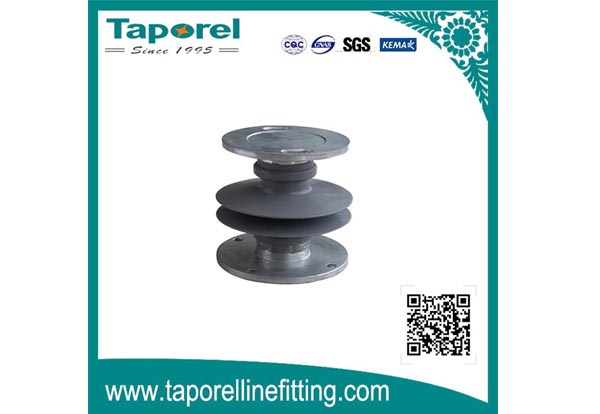A device that can withstand voltage and mechanical stress installed between conductors or conductors of different potentials and grounding members. There are many types of insulators with different shapes. Although the structure and appearance of different types of insulators are quite different, they are composed of two parts: insulators and insulator connecting fittings.
Composite insulators are a special insulation control that can play an important role in overhead transmission lines. In the early years, insulators were mostly used for telegraph poles. Slowly, a lot of disk-shaped insulators were hung on one end of the high-voltage wire connection tower. It was used to increase the creepage distance, usually made of glass or ceramic, called insulators.
When the original transmission systems were built, the ceramic insulator industry was strong in North America and utilities preferred to use domestic products. Tempered glass insulators were introduced in Europe in the 1950s and gained worldwide acceptance. In the United States, many users adopted the new technology in the 1960s and 1970s, while others were reluctant to use them due to concerns about vandalism. However, the use of glass insulators continues to expand in the USA.
Polymer (also known as composite or non-ceramic) insulators were introduced in the 1970s and have been in widespread use in North America since the 1980s. With the advent of polymers, the use of glass and porcelain suspension insulators appears to have started to decline. Polymers are particularly suitable for use in compact lines. Such compact lines minimize right-of-way requirements and allow new transmission paths to be created in congested urban areas.

As more and more high-voltage lines reach the end of their service life, many utilities are turning their attention to the rapidly growing number of aging porcelain insulators. The deterioration of porcelain insulators is usually due to impurities or voids in the porcelain dielectric and the expansion of cement in the pin area, which leads to radial cracks in the housing. The labor-intensive process is costly and requires specialized training of the workforce as cracks or punctures inside the porcelain cannot be detected visually and tools are required.
The power sector is one of the critical infrastructures that suffers as a result of disasters, leading to disruptions in the generation, transmission, and distribution of electricity. One of the reasons for this is the deposition of contaminants on insulators which start to conduct in foggy weather conditions, leading to flying arcs and power interruptions. Of the non-ceramic insulators, silicone insulators are better able to cope with flashover problems due to their unique hydrophobic properties. The hydrophobicity of silicone prevents water from forming on the insulator surface.
Silicone rubber insulators have many advantages over ceramic and glass insulators, such as good performance in contaminated environments, ease of handling, maintenance-free, lightweight, high strength-to-weight ratio, and high impact resistance. Due to these properties, it is becoming increasingly popular worldwide and is replacing traditional ceramic and glass insulators in power transmission worldwide.
Founded in 2010, Taporel Electrical (Jiangsu) Power Fitting Co., Ltd, held by Shaanxi Taporel Electrical Technology Co., Ltd. in Yangtze river delta economic belt, is a professional company specializing in R&D and manufacture of composite insulator fittings, power line fittings, and other fittings for transmission and distribution lines. It directly provides fittings for Taporel Electrical and Wishpower.
Taporel Electrical Insulation Technology Co., Ltd.
+86 29 8603 0621
No. 209 Jincheng Road, Jintan District, Changzhou City, Jiangsu Province, China
Copyright © Taporel Electrical Insulation Technology Co., Ltd. All Rights Reserved | Sitemap
